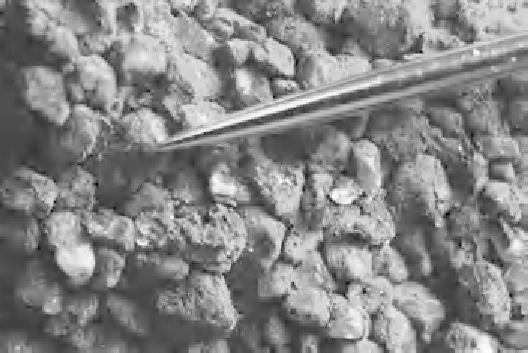Geology Reference
In-Depth Information
Figure 3.14
Triassic dune-
bedded aeolian
sandstone
(Buntsandstein),
Déu de la Roca,
near Mointroig,
Spain.
sorted. Alluvium is deposited in rivers and if transported for any
distance will become sorted and coarse clasts will be rounded. Other
important soils on land include organic soils such as peat, which
becomes coal when lithi
ed.
Desert sands are distinguishable from river-transported sediments by
their rounded, almost single-sized grains, which may become cemented,
especially by iron oxides, giving typical red beds such as the Permian
sandstone in the UK
(Figures 3.14
and
3.15).
They also lack mica, which
is either abraded to dust or blown away. Finer wind-transported silt forms
thick deposits called loess. Where cemented, loess has been exploited to
construct settlements, especially in China. This can be risky as loess is
prone to collapse when wetted or disturbed by earthquakes, and there are
numerous instances of loss of life as a result (Derbyshire, 2001).
Glaciers have covered much of northern Europe, Canada and the
northern USA several times in the last three million years. In Britain,
everywhere north of a line from London to the Bristol Channel was
covered in ice sheets. The rest would have been areas of permafrost
Figure 3.15
Uniform Miocene
weak sandstone
with rounded
grains, weakly
cemented with iron
oxide cement
providing some
cohesion, Algarve,
Portugal.


